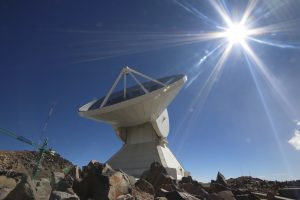
Atzitzintla, Mexico, Feb 22 (EFE).- Researching the origin of the Universe and black holes are two major missions in 2018 for Mexico’s Large Millimeter Telescope (LMT), the world’s largest telescope of its kind, marking the 20th anniversary since construction of the instrument began.
The LMT, with its 50-meter (164-foot) antenna, crowns Sierra Negra mountain, an extinct volcano in the central state of Puebla that rises 4,600 meters (15,081 feet) above sea level and where temperatures often hover around 0 C (32 F).
“This is the largest telescope of its kind in the world. There is no other millimetric telescope with such a large diameter, as most are around 10 to 15 meters wide, and a few are 35 meters wide. This is a unique Mexican research facility,” David Hughes, the LMT’s director and main researcher, told EFE.
This giant instrument detects millimeter-wavelength electromagnetic radiation, one of the faintest signals in the Universe and one of “the coldest objects” traveling through space.

These signals are not observed from afar as with a regular telescope. Rather, according to Hughes, primal material is analyzed to study “the whole history of the Universe.”
Thanks to millimetric telescopes, scientists can study the formation and evolution of the structure of the cosmos since its creation during the Big Bang, some 13.7 billion years ago.
The LMT started operating in 2011 and the first research using this instrument was carried out in 2014.
In 2017, the team of scientists working at the LMT published an article in Nature Astronomy about one of the first massive galaxies that ever formed, around 12.8 billion years ago.
The LMT is a joint US-Mexico project, working in close collaboration with UMass-Amherst.
The instrument is part of a larger network of telescopes that has been operating since 2017 on a project that could revolutionize science – proving the existence of black holes, posited in 1915 by Albert Einstein in his General Theory of Relativity.
